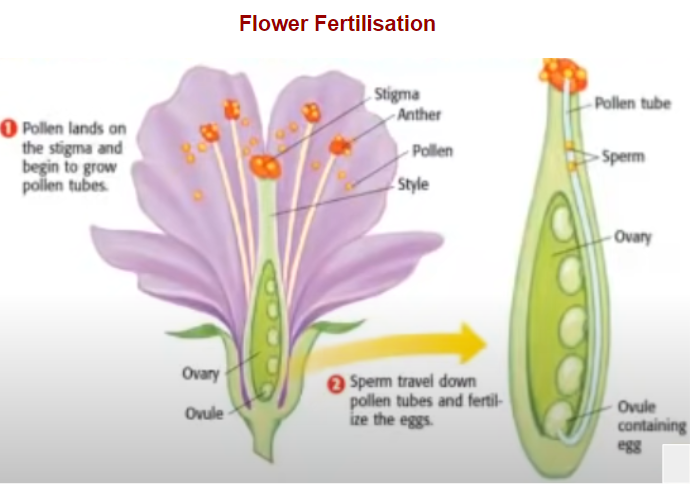Flower Structure and Fertlisation
A series of free Science Lessons for 7th Grade and 8th Grade, KS3 and Checkpoint Science in preparation for GCSE and IGCSE Science.
Flower Structure and Fertlisation
The following diagram shows how the steps in flower fertilisation. Scroll down the page for more explanations.

The flower is the reproductive organ of many plants.
The sepals protect the unopened flower.
The petals is usually brightly coloured to attract insects.
The stamens form the male parts of the flower. The stamen consists of an anther held up on a filament. The anthers produce pollen grains.
The stigma is the top of the female part of the flower which collects pollen grains.
The ovary produces the ovules. When fertilised, the ovary will then form the fruit and the ovules will form seeds.
The nectary produces a sugary solution called nectar, which attracts insects
Try out our new and fun Fraction Concoction Game.
Add and subtract fractions to make exciting fraction concoctions following a recipe. There are four levels of difficulty: Easy, medium, hard and insane. Practice the basics of fraction addition and subtraction or challenge yourself with the insane level.

We welcome your feedback, comments and questions about this site or page. Please submit your feedback or enquiries via our Feedback page.